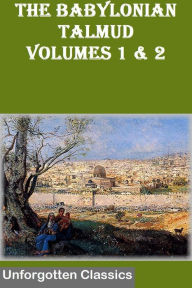Paul Naudon is a law scholar specializing in the history of civil law and institutions. He is also a Freemason who has held many high ranking posts in France, including that of Grand Prior of the Gauls (Rectified Scottish Rite) and State Minister for the Supreme Council of the Ancient and Accepted Scottish Rite. He lives in France.
The Secret History of Freemasonry: Its Origins and Connection to the Knights Templar
by Paul Naudon
eBook
-
ISBN-13:
9781620553374
- Publisher: Inner Traditions/Bear & Company
- Publication date: 03/28/2005
- Sold by: SIMON & SCHUSTER
- Format: eBook
- Pages: 320
- Sales rank: 292,515
- File size: 1 MB
What People are Saying About This
Available on NOOK devices and apps
Want a NOOK? Explore Now
Explores the hidden history of Freemasonry from ancient Rome, through the Middle Ages, to the present
• Shows the close connection between medieval masons and the Knights Templar
• Illustrates the sacred nature of Roman and medieval trade associations
• Reveals the missing link that connects the lodges of modern Freemasonry to the medieval brotherhoods of builders
Historians often make a sharp distinction between the operative Masonry of the Middle Ages and the speculative Masonry of modern times, emphasizing that there is no direct bridge connecting the two. Modern historians also have scoffed at Masonic claims concerning the close relationship between the Lodge and the Temple. Using medieval archives housed throughout Europe, historian Paul Naudon reveals that there was in fact a very intimate connection between the Masons and the Knights Templar. Church records of medieval Paris show that most, if not all, the Masons of that time were residents of the Templar censive, which allowed them to enjoy great exemptions and liberties from both church and state as a result of the protection afforded them by this powerful order.
Naudon shows that the origins of Freemasonry can be traced back to the collegia of ancient Rome. He traces the evolution of organizations such as the Comacine Masters, the Arab turuqs, and the brotherhoods of builders created under the aegis of the Benedictines and the Knights Templar, all of which provide the vehicle for the transmission of a sacred tradition from pre-Christian times to the modern era. This tradition is the source of Masonic ritual and symbolism, and it provides the missing link in the transformation of the operative Masonry of the medieval cathedral builders to the spiritual principles of modern speculative Masonry.
Customers Who Bought This Item Also Bought
-
- Freemasonry
- by Giles Morgan
-
- The Magus of Freemasonry: The…
- by Tobias Churton
-
- The Templar Meridians: The…
- by William F. Mann
-
- The Everything Freemasons Book…
- by John K YoungBarb Karg
-
- The History of Freemasonry:…
- by Albert Gallatin Mackey
-
- The History of the Knights…
- by Charles Addison
-
- Is it True What They Say About…
- by S. Brent MorrisArturo de Hoyos
-
- The History of the Knights…
- by Charles G. Addison
-
- Mysteries and Secrets of the…
- by Lionel and Patricia Fanthorpe
-
- Duncan's Ritual of…
- by Malcolm A. Duncan
-
- The Naked Socialist
- by Paul B. SkousenMrs. W. Cleon Skousen
-
- BABYLONIAN TALMUD: Volume 1…
- by Michael L. Rodkinson
-
- The Secrets of Rosslyn
- by Roddy Martine
-
- Dungeon, Fire and Sword: The…
- by John J. Robinson
-
- A History of the Inquisition…
- by Henry Charles Lea
-
- The History of the Knights…
- by Charles AddisonCharles River Editors
Recently Viewed
". . . examines both Freemason history and spiritual concepts and how they changed form early to modern times. . . . fascinating and informative chapters covering everything from cooperative masonry associations to speculative masonry rituals."
"A fascinating book for those with more than a passing interest in architecture as the conscious act of creating sacred space as well as an appreciation of Freemasonty as symbolising man's spiritual quest to build the unseen Temple of the Lord on earth."
"For hardcore aficionados of architecture and academics interested in the creation of social sacred space across time, this book is a must-read."
"Naudon's book is a historic tour-de-force . . . . Those intrigued with such books as The DaVinci Code will find in The Secret History of Freemasony the historic truths which underlie the novelists' free-wheeling sspeculations."
"Naudon's book is an impressive work of scholarship grounded in fascinating ideas about sacred space, the rituals of building churches, cathedrals and temples, as well as the varied brotherhoods established to conduct what was once considered a divinely inspired activity."
"Readers interested in secret societies and Freemasonry will enjoy this well-written account. Those interested in the connection to the Knights Templar will find this must-reading! Highly enjoyable!"
















